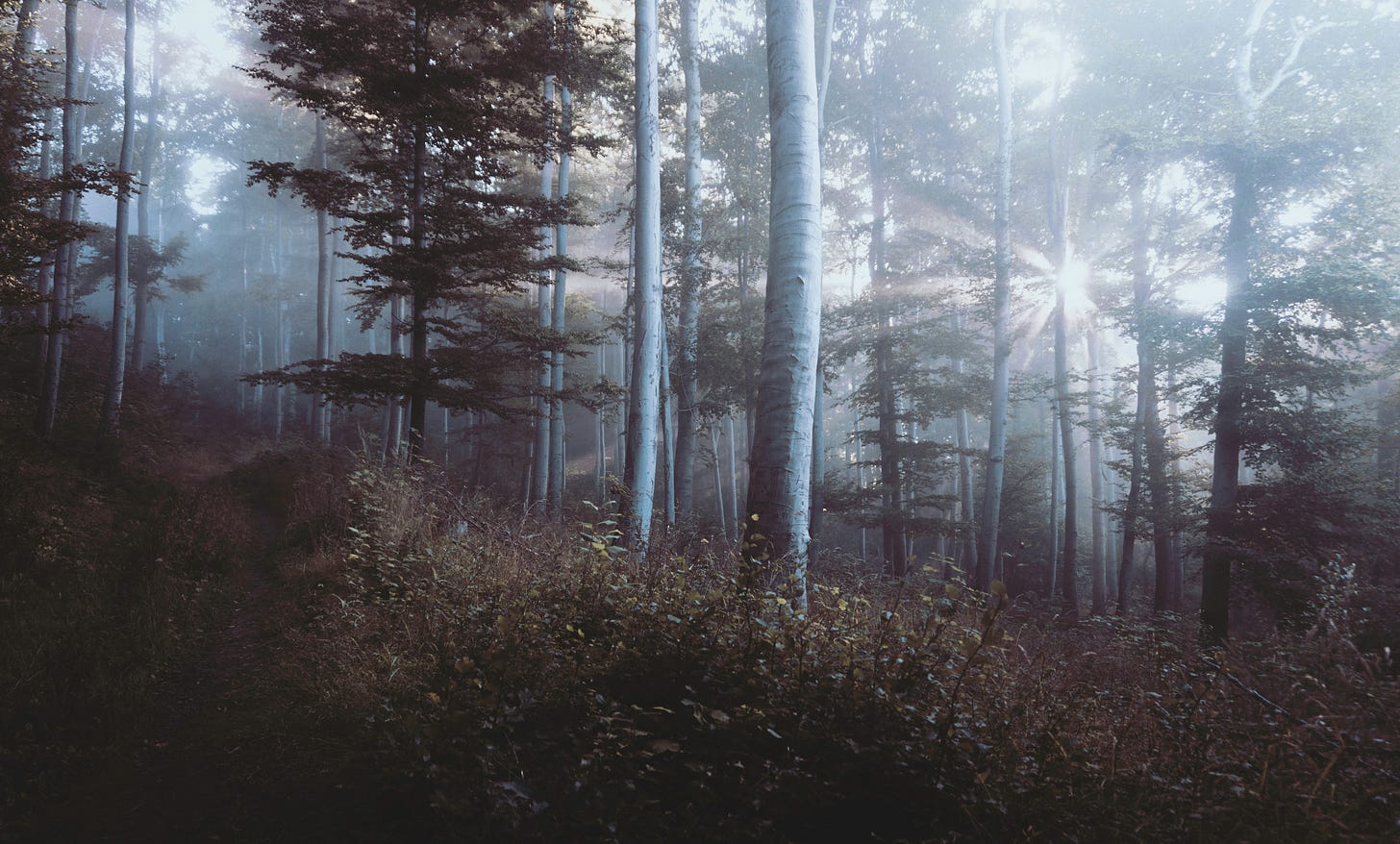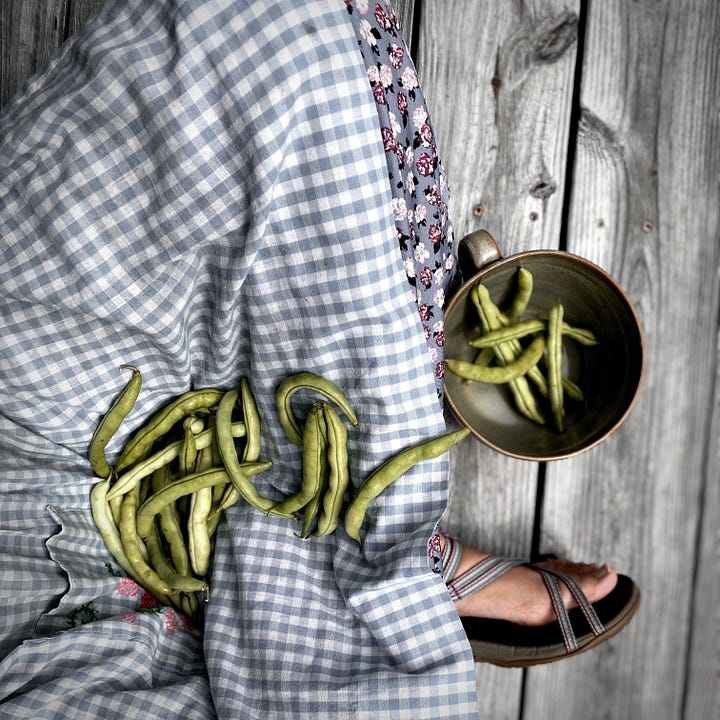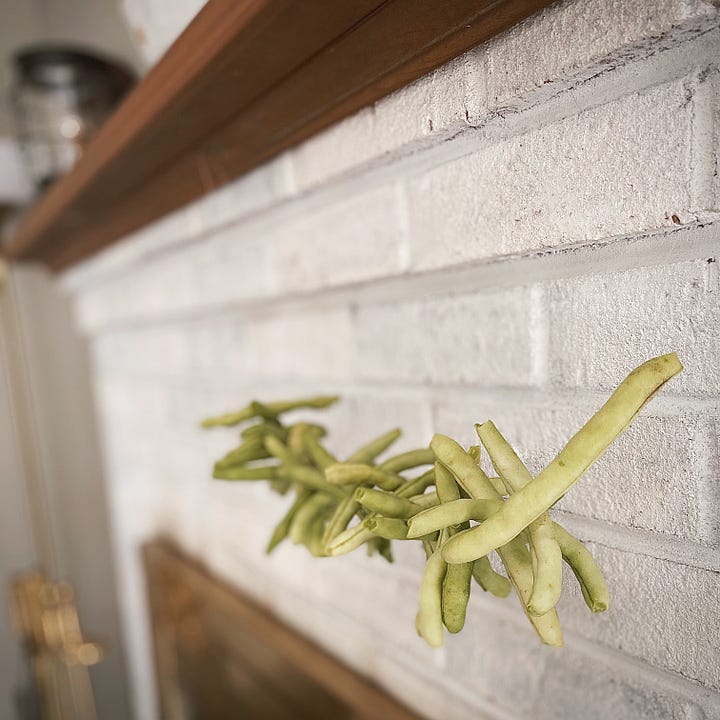
Webster’s dictionary lists 3 definitions for the noun “provision.”
a) The act or process of providing
b) The fact or state of being prepared beforehand
c) A measure taken beforehand to deal with a need or contingency
I’ve been thinking a lot about the concept of provisions lately.
I’m currently doing some research for a new book proposal, and, as authors are often wont to do, I got stuck for far too long down a research rabbit hole.
I was working on one simple paragraph about how our little town in rural Western North Carolina came to be named after the famed frontiersman Daniel Boone. The naming was a bit perplexing because Boone was never reported to have lived here, only to have hunted in the area occasionally. My seemingly simple question led to a stack of Boone bios on my bedside table and a newfound obsession with the man, the myth, the legend.
I suppose my interest in Boone is part geographic, part ancestral. My own property line in the community of Meat Camp runs along the Old Buffalo Trail, a wildlife path that Cherokee and Catawba hunters (and eventually settler woodsmen including Boone) were said to frequent in their pursuit of meat and hides. Additionally, my six times Great Grandfather, Aaron Burleson II, was a close friend of Daniel Boone’s (this according to oral family history but confirmed by a simple Google search). My quest to know more about the American icon may be driven by a personal desire to know something of myself, my own origin story, and how I came to feel so very much at home in these mountains.
I’ll spare you a lengthy analysis of Boone’s legacy and legitimacy within the American imagination. My deep dive into Boone’s life led to a bit of a deconstruction of the myth around the man and a deeper awareness of his failures (his incompetency as a businessman, his absence as a father, and most profoundly, his reckless encroachment on native lands).
But I emerged from my rabbit hole inspired by Boone’s love of the woods – the sheer thrill he experienced while hunting alone or with one or two trusted friends. He was famous for his “long hunts,” expeditions that took him deep into the wilderness for months at a time. Once, he was gone from his family for nearly two years.
Longhunters often set out at the beginning of winter as this was the season when animal hides would be in their best condition for selling. Living and working in the cold, rugged terrain wasn’t easy. This type of hunt required that you travel light, and I am struck by the simplicity of their supplies: gun powder and tools to work on rifles, a linen shirt and deer hide moccasins to protect against snake bites, a wide brimmed hat to protect against the elements (not, as is traditionally believed, a coon skin cap), salt to cure the meat from the hunt, a knife for skinning game, a flint for a fire, a small bag of cornmeal to mix with water and bake on hot stones. Besides these simple provisions, longhunters lived off the land.
The term “provision” suggests austerity, a recognition that sometimes we gather and carry only what is most necessary. When excess threatens to weigh us down, we must choose wisely.
I’m more convinced than ever that the times we live in require us to live a bit more leanly. I’m not just speaking of material possessions. We need to whittle down our list of essentials, what’s necessary for happiness and harmony with others. We live in an age of excess. We carry a surplus of opinions, grudges, convictions, awarenesses, desires, and expectations. This oversupply often distracts us from what is actually needed, weighs us down from the free movement of loving one another and enjoying the simple pleasures life has to offer.
Some supplies are certainly necessary. The concept of provisions is especially important in historic Appalachian foodways as the isolation of the mountains, particularly in the winter, meant that households needed to be well-stocked with vital food items if they were going to survive.
A quick etymological study reveals that the word provisions is derived from the Latin providere, which means “to foresee” or “to attend to” with the root per meaning “forward” and videre meaning “to see.” The late 14th century term provisioun means “foresight, prudence, care.” Buried in the word’s very definition is the recognition that wisdom is needed to meticulously gather, protect, and bring along what is required (it is the foolish who must sometimes resort to improvising – or acting without foresight or preparedness).
My hope for my newsletter has always been that I might share some “provisions” that have been helping me along the way, especially as I make an effort to simplify and set my sights on what matters most to me in life: faith, community, family, and…hope (which seems in short supply these days). The older I get, the less inclined I am to quibble over non-essentials or obscure particulars of theology or politics. While I suppose there is a time and a place for these conversations, I’m focused on gathering and holding close the things that truly nourish me, bring me joy, and help me live in more embodied ways.
Provisions are practical, storable, durable, and portable. Lots of things can be carried as provisions: a resonant song, an inspiring poem, a nutritious recipe, a life-giving conversation with a friend, a long-held ritual that re-emerges in your life just when you need it. As I’ve always done in my newsletter, I’ll be sharing these things here on Substack, and I hope perhaps they might add to your sense of being provisioned, equipped in some way for whatever journey you may be taking on any given day or week.
My deepest conviction is that God does indeed provision us. I’ve always believed that despite our own sense of inadequacy, God gives us what we need for life and godliness, and maybe even happiness (or at least the simple kind of joy I believe we all are looking for). What’s needed is the humility to accept what’s been given, the wisdom to know what is essential, and the willingness to let go of what’s not. Here, we will endeavor to collect and carry those provisions together. Thanks for joining me!

And now for some provisions…
I recently finished reading Appalachian Reckoning: A Region Responds to Hillbilly Elegy. I’ll be thinking about the many thoughtful essays, prose, poetry, and photographs in this book for a long time. But one poem entitled “Canary Dirge” by West Virginian poet Dale Marie Prenatt just won’t seem to leave me.
Ever heard something referred to as a “canary in the coal mine?” This idiom originates from the practice of miners bringing small, caged canaries down into the coal mines with them. If the canary keeled over, it meant the air was toxic or an explosion was imminent. The canary in a coal mine warns us of an approaching but invisible danger.
I am increasingly convinced that the story of Appalachia has a larger lesson to offer us all. Appalachia is more than a cautionary tale, but sometimes I wish we’d all pay attention to its difficult history: the way the mountains were tended communally with care and later plundered, the way the people and their culture have been leveraged in the America’s self-mythology. These histories can be a “canary in the coal mine” for a culture that sometimes seems intent on exploiting both the land and one another.
Maybe it’s this poem, or maybe it’s the Labor Day holiday, but I’ve been listening to some labor union and strike songs lately, especially this song “Which Side Are You On” written in 1931 by activist Florence Reece. Reece’s husband was a coal union organizer in Harlan County, Kentucky and it is said that she wrote the song one night after strike breakers stormed into her home to terrorize her and her children. I posted my own version on Instagram last week, but I’m partial to this rendition from Natalie Merchant.
And finally, some literal provisions. I’ve been trying to find more ways to “eat locally” throughout the year, but to do this, I need to learn how to preserve fresh, local summer produce for the winter. Later this month, I’ll be heading to my friend’s farm to learn how to can vegetables, and I’m also trying out an old Appalachian method of drying green beans. You simply string any non-fuzzy green bean (called “greasy beans”) with a needle and thread (think popcorn/cranberry garlands for the Christmas tree), hang them in a warm, dry spot and allow them to dry over 6-8 weeks. Known as “leather britches,” these dried beans can be cooked later in water and ham fat to create a protein rich side dish for deep winter.
The “stringing” phase of the experiment was pretty straightforward, but I’ll keep you posted on how they dry and, more importantly, how they taste once I cook them up this winter.







Oof. That poem! Thank you for your reflections.
Amanda, your stories and reflections have touched my heart and hit home again and again for me in recent years. I'm delighted to find you here on Substack this morning. I'm excited about sharing your wise and winsome words with my people ...